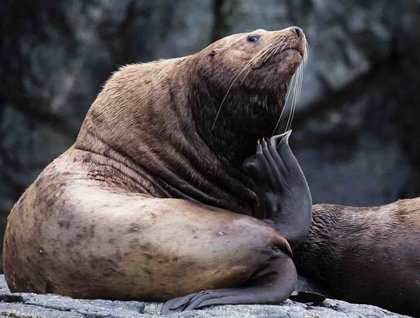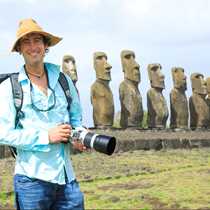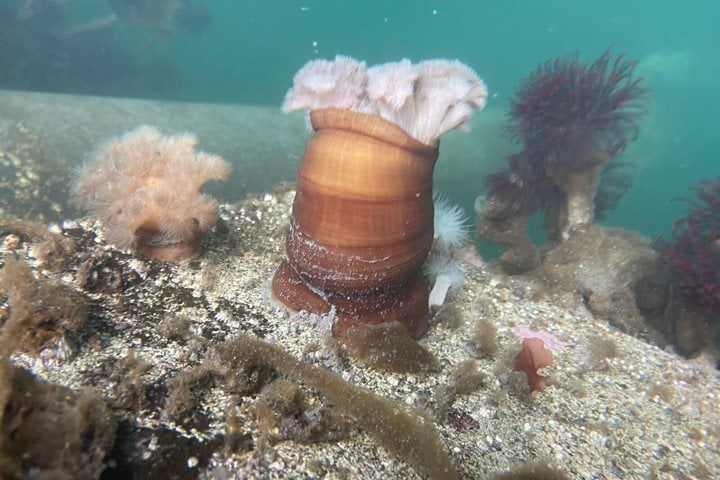It was a packed day for the National Geographic Sea Lion on the northern Tongass National Forest. With three destinations in 9 hours, the lounge was vibrating with the heavy rattle of the anchor chain rising and falling.
After an early breakfast, we bundled up in layers to board Zodiacs bound for the narrow channels of the Inian Islands. This little archipelago stands in Icy Strait, the northernmost entrance to Alaska’s famed Inside Passage, such that all tidal waters feeding countless bays and inlets must ebb and flood right past the islands twice daily. This gives the passes of the Inian Islands some of the fiercest tidal currents in the world, which tugged and spun our Zodiacs, as though running a river through Class 2 rapids. It also makes the islands incredibly biologically rich, as every critter migrating between the open North Pacific and the protected nurseries of the inside waters passes by – a parade of life at every turn of the seasons.
Today, it was salmon surging in on the rising tide, with hundreds of Steller sea lions cruising the waters to intercept their migration home. Violent splashes signaled a successful hunt: lacking hands to help rip the salmon’s flesh, sea lions thrash the fish into bite-sized chunks, while kittiwakes circle overhead looking for scraps. Curious and playful, the sea lions surfaced all around our boats, puffing fishy breath through their long whiskers. One young girl was captivated: “See that one! Oh, over there! They’re all around us, I don’t know which way to look!” As we made our way back to the ship, the sun needled through bursts of storm clouds, and we let it warm our faces while a bald eagle above us spread its wings to dry.
We were joined on the ship by Mary Jo, one of eight year-round residents of the tiny coastal fishing village of Elfin Cove. She described the travails and joys of living remotely, far from help if something goes wrong, but very close to the land and ocean that sustain them. We boarded the Zodiacs again to walk Elfin Cove’s boardwalks (no roads!) that skirt the steep rocks of the village.
Finally it was off to George Island, far to the west at the precipice of the North American continent. As wild as it felt today, this place housed troops during World War II – apparently no place was remote enough to escape the war. We hiked through the dripping, moss-covered branches of the temperate rainforest to a rusty 6-inch diameter gun, perhaps 15 feet long with shells weighing 115 pounds apiece. It felt out-of-place given the peaceful scene before us: orcas and gulls in the ocean below.
At dinner, I asked a few guests what I should write in my Daily Expedition Report. One replied: “Where I come from, animals intrude into our world. Here, we intrude into theirs. We are the visitors here in this wilderness!” And another: “After what I’ve seen today, I know one thing for certain: I want it to be here for my grandchildren to see.”









